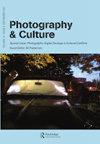Indigenous Uses of Photographic Digital Heritage in Postcolonizing Australia
IF 0.3
4区 艺术学
0 ART
引用次数: 4
Abstract
Abstract The process of “postcolonizing” continues in the former settler colony of Australia, entailing intense struggles over national identity and culture. Digital heritage plays a key role in these conflicts, in the form of historical and newer archives that have become increasingly important within Indigenous advocacy for recognition. Constructed from more traditional museum, library and private collections, these have become digital assets that now circulate in radically different ways—for example, as proof of identities, and links to Country. Since the late 1990s, as a result of postcolonizing advocacy by Indigenous people and cultural institutions in alliance with rapidly developing digital technologies, a profound shift in management practices has facilitated the assertion of control by First Nations people. These are exemplified by the Aṟa Irititja project, and its replicants, such as the Storylines project at the State Library of Western Australia. Digital heritage and digitized historical photographs in particular are now considered to be key resources for building Aboriginal history and identity, challenging oppressive state narratives and strengthening communities. Despite concerns regarding loss of culture caused by globalization and continuing inequalities, Aboriginal interests have drawn upon this expanded photographic digital heritage resource, to advance their rights through new temporal practices of production, circulation, and consumption.后殖民时期澳大利亚数码摄影遗产的土著使用
“后殖民”的过程在澳大利亚的前移民殖民地继续进行,涉及激烈的民族认同和文化斗争。数字遗产在这些冲突中发挥着关键作用,以历史档案和新档案的形式存在,在土著人民争取承认的宣传中发挥着越来越重要的作用。这些由更传统的博物馆、图书馆和私人收藏构建而成的数字资产现在以完全不同的方式流通——例如,作为身份证明,以及与国家的链接。自20世纪90年代末以来,由于土著人民和文化机构的后殖民倡导与快速发展的数字技术相结合,管理实践的深刻转变促进了第一民族人民的控制主张。例如Aṟa Irititja项目及其复制项目,如西澳大利亚国家图书馆的故事线项目。数字遗产,特别是数字化的历史照片,现在被认为是建立土著历史和身份、挑战压迫性国家叙事和加强社区的关键资源。尽管人们担心全球化和持续的不平等会导致文化的丧失,土著利益还是利用了这种扩大的摄影数字遗产资源,通过新的生产、流通和消费的时间实践来推进他们的权利。
本文章由计算机程序翻译,如有差异,请以英文原文为准。
求助全文
约1分钟内获得全文
求助全文

 求助内容:
求助内容: 应助结果提醒方式:
应助结果提醒方式:


